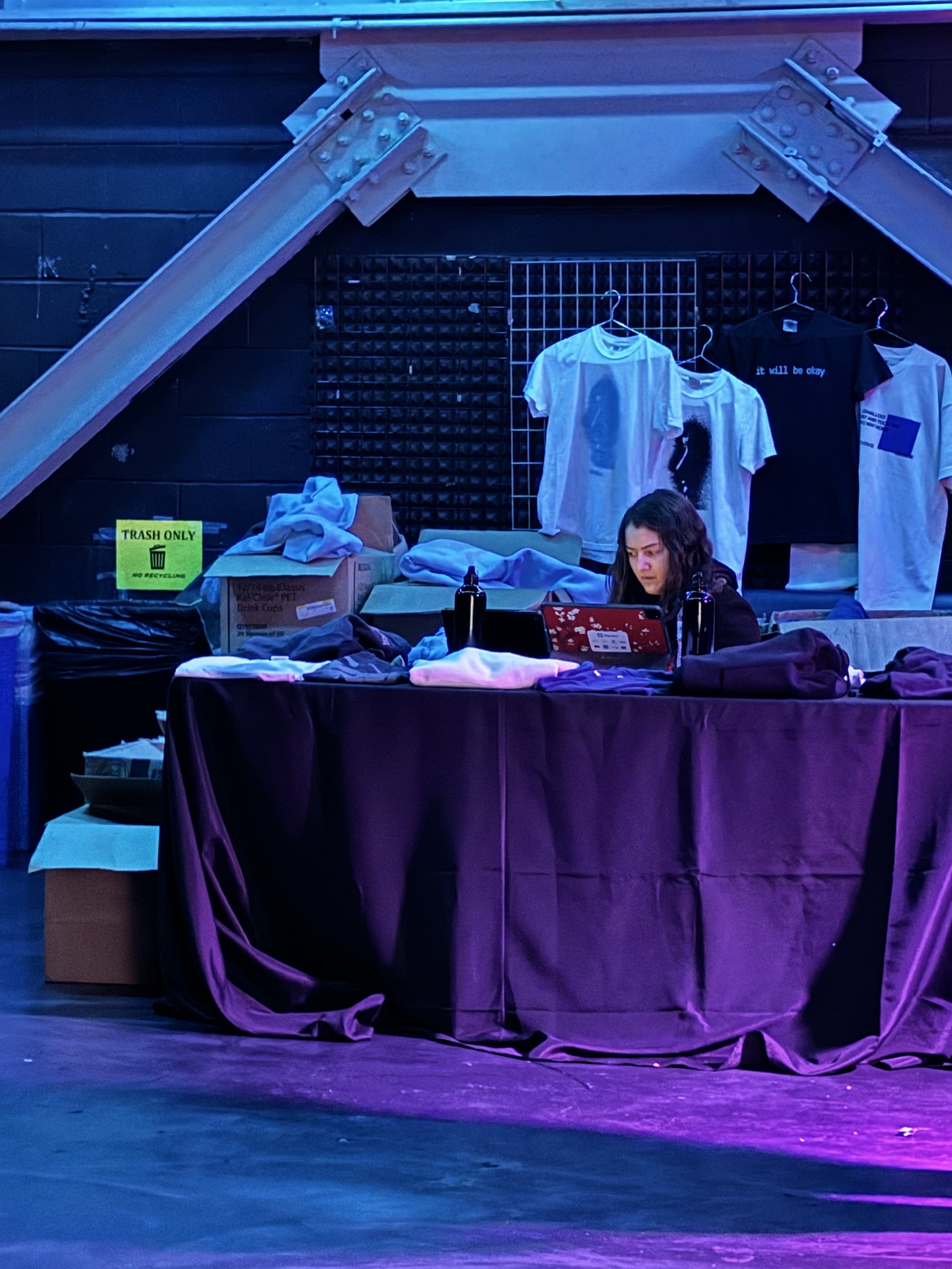Merch retail: The Ultimate Letdown
“Trash Only, It Will Be OK” (IMG: Musique Mode)
We've all been there, at a concert for our favorite artist; a night we've probably been planning for for weeks, even months, and saving up for so we can get that ridiculously expensive-for-what-it-is hoodie that we'll probably only wear the day after and on weekends. And then we get stuck in a ridiculous line before the show, don't want to leave the concert to stand in line, or by the time we get to the front of the line the hoodie in our size is gone, so we have to decide if we're going to spend our $80 on something else or not at all. We opt for the wrinkly tee-shirt in the color we don't like as much in a size bigger than we wanted after the clearly only 18-year old sales girl digs through the broken boxes behind the table. We shrug it off, after all, we're having an amazing time, we're living 'in the moment,' but wake up the next morning feeling buyer's remorse. We got something we sort of like for an artist we really like. The ultimate let down.
This scenario is not uncommon in the world of live music, where the thrill of the performance often contrasts sharply with the underwhelming merchandise experience. Despite the evolution of music merch into a multi-billion dollar industry, with over 10 million units sold in 2022 according to atVenu, the retail process remains antiquated. Originally conceived as a means to provide fans with a tangible memento and generate extra revenue, the merchandising approach has seen little innovation over the years.
In small venues, artists often resort to makeshift setups, with limited and sometimes subpar merchandise offerings. Connectivity issues often plague cashless transactions, and the dimly lit, cramped spaces do little to showcase the available products. Medium venues offer slightly improved conditions with dedicated retail areas apart from the concert floor, yet the fundamental challenges remain the same.
The situation in large venues differs, but not necessarily for the better. Here, the venue often takes charge, leading to a disconnect between the artist and the merchandise sold. Higher prices, driven by the need to split profits with the venue, and the inability to closely examine products further detract from the experience.
This gap in the live music experience presents a significant opportunity. The key lies in reimagining the merchandise journey from a retail-first perspective, focusing on what fans truly desire. Enhancements such as better product presentation, including 3D displays and QR codes for detailed viewing on smartphones, can make a substantial difference. Implementing flexible purchasing and pick-up options, such as pre-concert buying, post-show collection, or home delivery, can streamline the process.
Educating sales associates about the merchandise with preset information, ensuring they can effectively communicate product features and exclusivity, will also enrich the buying experience. For artists willing to invest further, innovative solutions like local retail partnerships, mobile pop-up stores, and technology-integrated sales can elevate the merchandise experience to new heights, synchronizing it with the authenticity of live performances.
While merchandise sales remain a secondary concern for many artists, rethinking this aspect can lead to improved fan experiences and untapped revenue potential. By adopting a more strategic approach to merchandise, incorporating enhanced presentation techniques, and leveraging new technologies, artists can transform this overlooked aspect into a significant and rewarding facet of the concert-going experience, while increasing overall sales.

